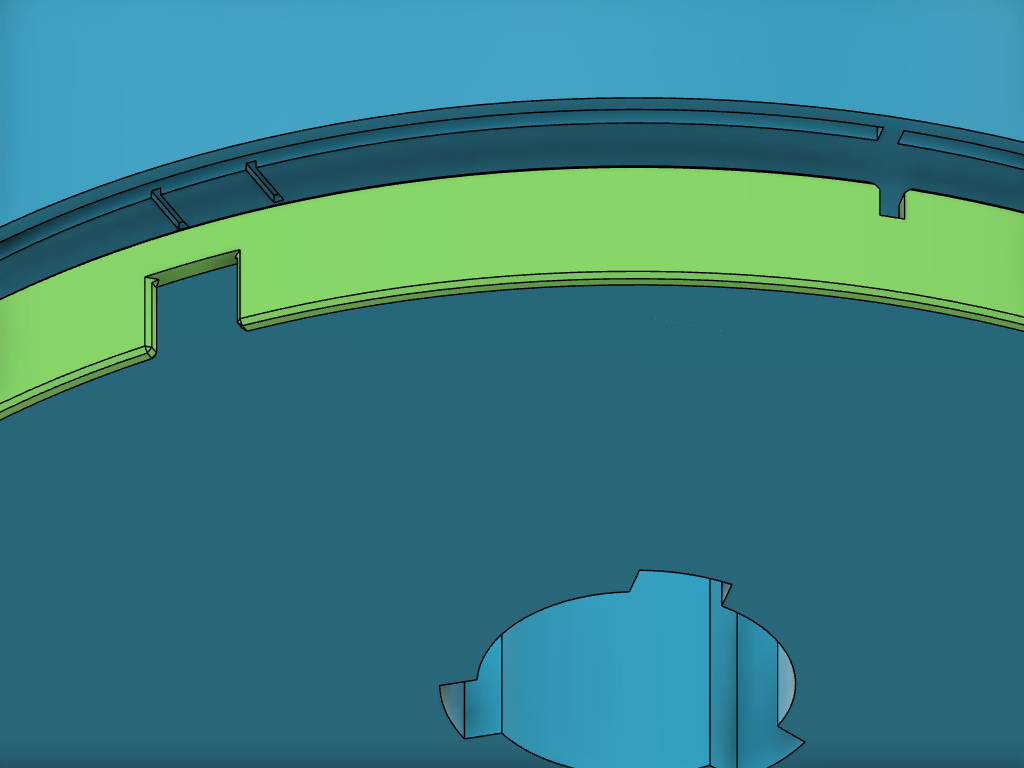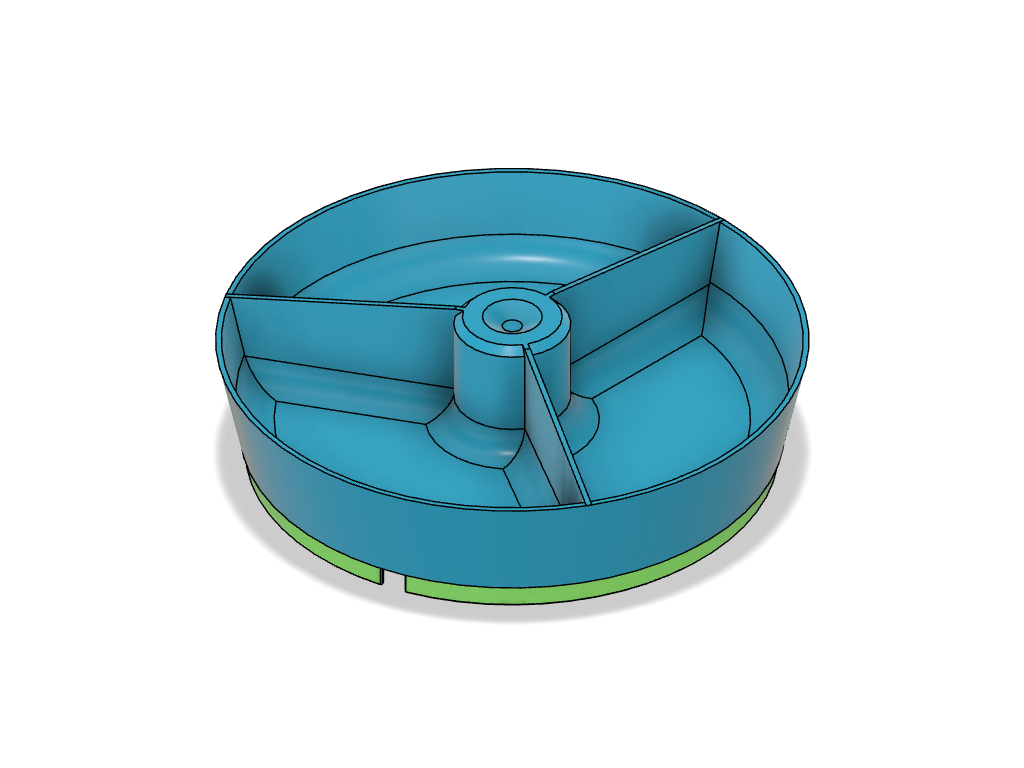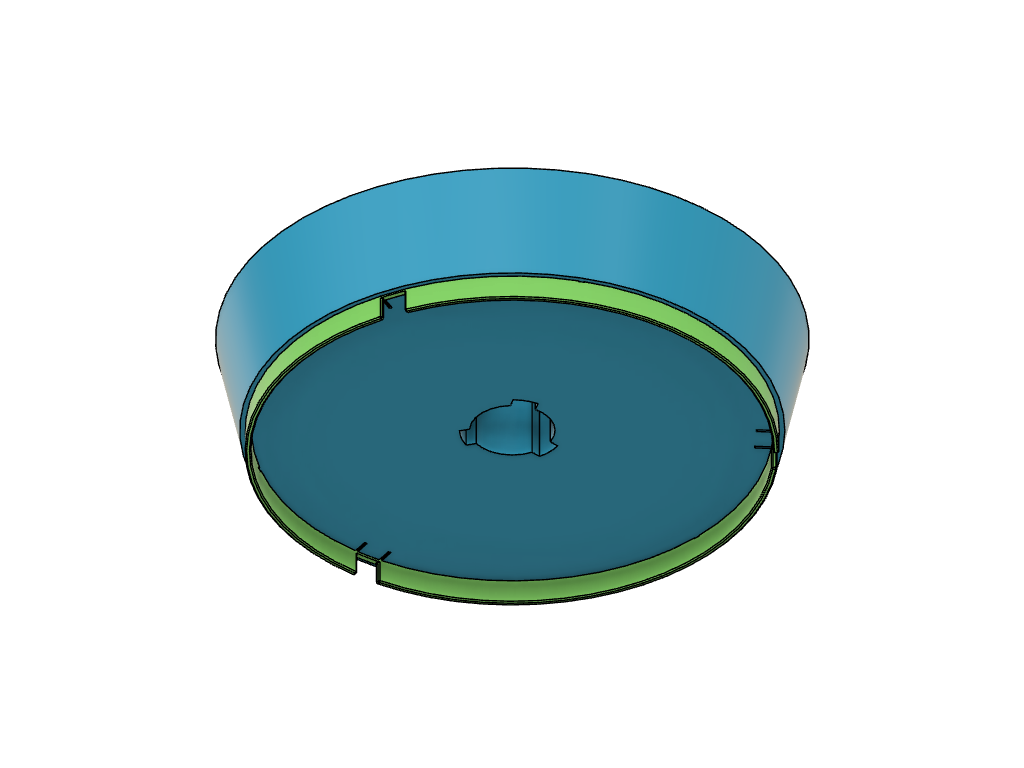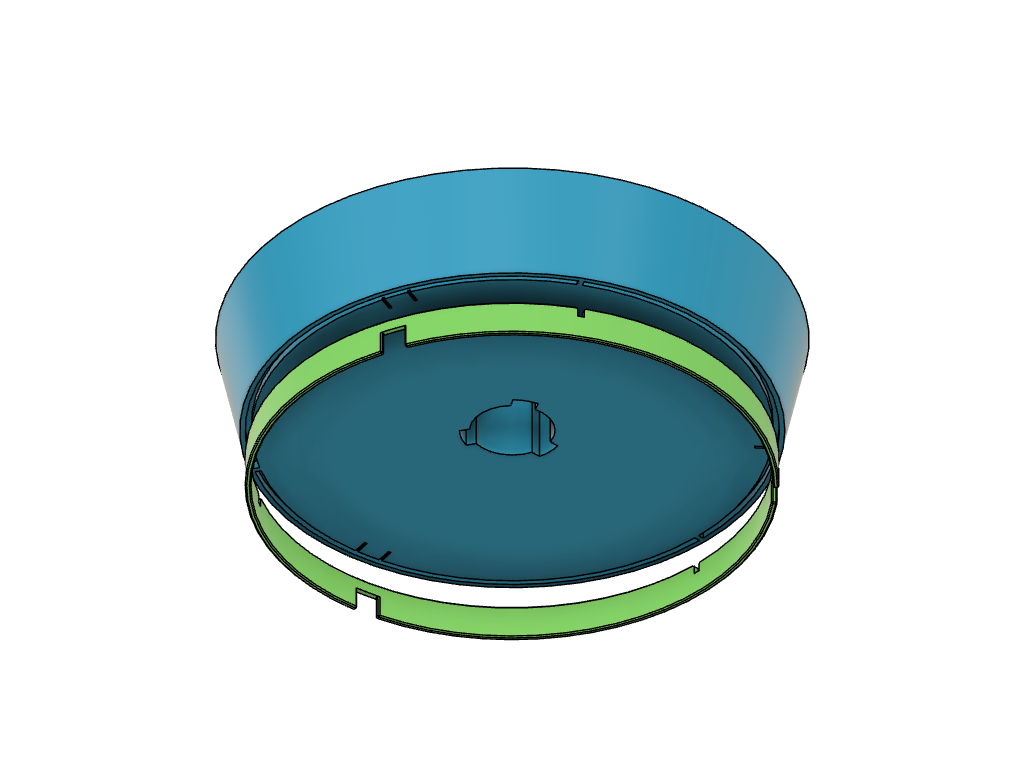At some point, my cat figured out that she can wake me up in the morning to get food quicker. Every day thereafter, I had to get up at 6AM to feed her. I bought the Cat Mate C300 automatic feeder to address this problem, and it worked really well. Now my cat gets her food at 6AM and does not bother me about it. The only issue with the feeder is that there is no way to buy a second bowl for it. This is a problem, because I prefer to run my dishwasher overnight, and the only bowl is in the cat feeder at that time, so I can not throw it into the dishwasher.
Since there was no way to buy a spare dish/bowl for the feeder, I designed and 3D printed one. It works great, and I hope that it can be useful for somebody else, too.
The Design
Everything prints without supports, because I split the design into two parts: the main dish, and the rim. The rim needs to be glued into a matching slot in the main dish. There are small alignment tab to ensure that it is glued in the proper position. I used quality CA glue to glue it in.

How to Print
Since I was planning to wash the bowl in the dishwasher, I printed it with PETG, which I have tested to not get deformed on the top shelf of my dishwasher. Please read the food safety section below.
- I increased the number of perimeters to 3, to improve water impermeability of the walls.
- I used the Hight Range Modifier feature of the Prusa Slicer to reduce layer height to 0.1mm in the height range between 5mm and 6.5mm. This ensures that the fillets in the bottom of the bowl print smoothly. If you print the entire bowl and 0.2mm layer height (or larger), then the fillets will be somewhat rough.
Food Safety
I only load dry food into the cat feeder. My cat eats canned food in the evenings, and I don’t use the feeder for that. This is why I was not all that much concerned about food safety of the bowl. My cat picks up the food pellets without really licking the bowl, and there will be no liquid carrying fats and proteins into the pores of a 3D printed bowl. For me, I used quality PETG filament to print the bowl, and, in my opinion, this is safe enough for my application.
I encourage you to do your own research about food safety of 3D printed parts, and to make your own informed decision. Here is, for example, a write up by Prusa on the topic.
Thoughts About Cat Feeders
When choosing the feeder, I considered other models on the market. There are cheaper feeder with a timer. I liked the C300 because it has a clock, not a timer. My reasoning is that I noticed that my cat has excellent sense of time, and forms routines that are remarkably on the clock. This is why I wanted the food to be dispensed exactly at the same time every day, to minimize the chance that my cat would get confused and decides to wake me up. This is why I decided against buying the C200, or the C100 models, even considering I was going to use the feeder for only one feeding each day. If you are considering the C500, be warned that designing a 3D printed bowl for that model would be a lot harder, considering that it is larger that the print bed of most consumer printers. The bowl for the C300 just barely fits the 210mm limit of my printer’s print bed.
Get the Files
The design is released under the Creative Commons Attribution NonCommercial license. Download the zip file with the STL, STEP, and Fusion 360 files below. If you find my design useful, you can buy me a coffee.




